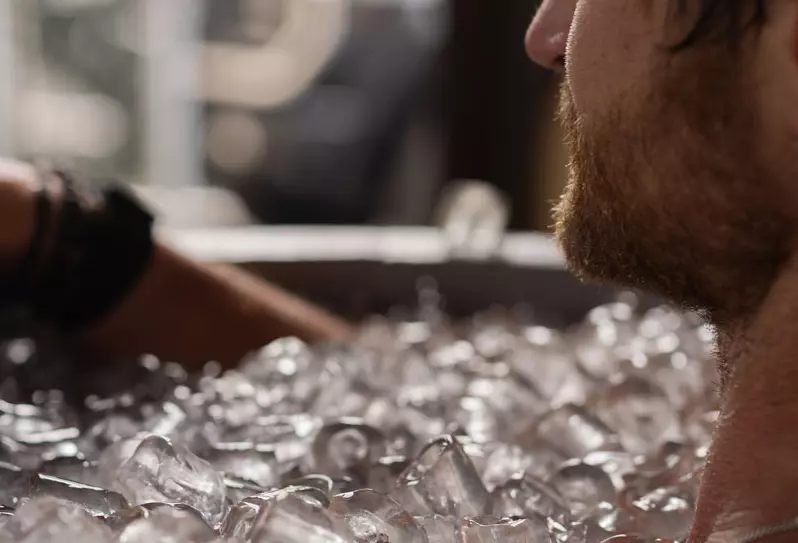Have you noticed people gleefully plunging into icy water on your social feeds lately? You’re not imagining it. Cold exposure and ice baths have taken the wellness world by storm in 2025, transforming what was once a practice for elite athletes into a mainstream wellness ritual. People everywhere—from celebrities to busy professionals—are embracing the cold for better recovery, sharper minds, and stronger bodies. But why has this age-old tradition become suddenly hot? Let’s thaw out the facts behind this chilling trend.
Why Cold Exposure and Ice Baths Have Gone Viral in 2025
Social Media Buzz Meets Science
Platforms like Instagram and TikTok are flooded with people taking the plunge, sharing their ice bath routines and recovery journeys. What began as a professional athlete’s recovery secret has turned into a lifestyle statement—one that’s all about resilience, self-care, and a bit of daredevil spirit. But this isn’t just about showing off. In 2025, science has caught up, offering strong evidence for the physical and mental benefits of cold exposure.
A Shift in Wellness Focus: From Pushing Limits to Smarter Recovery
Today’s wellness consumers are prioritizing recovery and resilience just as much as pushing through punishing workouts. People want smarter solutions that optimize their well-being, not just quick fixes or risky extremes. Enter the ice bath—a simple, accessible tool that promises speedy muscle recovery, less inflammation, better moods, and community support.
The Science Behind Cold Exposure and Ice Baths
What Happens to Your Body in the Cold?
When you dip into icy water, your body springs into action. Blood vessels constrict to protect vital organs, restless muscles calm down, and your brain triggers the release of feel-good chemicals. This state of short-term stress is what delivers most of the benefits.
- Reduced Muscle Soreness & Inflammation:
Scientific studies have shown that cold water immersion can decrease muscle soreness and help manage inflammation, especially after intense exercise. - Boosted Metabolism:
The shock of cold water activates brown fat, kicking your metabolism into high gear and helping burn more calories even at rest. - Mental Health Perks:
Evidence points to increased release of norepinephrine and endorphins, both of which can improve mood, sharpen mental focus, and reduce anxiety. - Enhanced Immunity:
Cold exposure may stimulate a more robust immune response, helping your body fend off illness. - Cellular Health and Longevity:
Recent research highlights potential anti-aging effects, such as improved cellular repair and longevity through mechanisms such as autophagy and heat shock protein activation.
How Cold Exposure Became the Must-Try Wellness Trend
Market Growth and Mainstream Adoption
The global cold plunge and ice bath market has exploded, reaching nearly $480 million in 2025. What once belonged to professional athletes is now a staple in gyms, wellness centers, and even home spas around the world. Over 70% of pro sports teams have adopted cold immersion as a key part of their recovery protocols.
Accessibility for All
Home-friendly plunge tubs, portable ice bath kits, and even contrast therapy (alternating hot and cold) have made cold water therapy simple and available to everyone—urban dwellers, busy parents, and tech fans alike. High-tech sensors, stylish designs, and social media communities make cold exposure not just a practice, but a point of pride and connection.
Practical Guide: How to Safely Try Cold Exposure
Getting Started
If you’re ready to join the frozen revolution, start with small, manageable steps. Safety first—always consult your healthcare provider before beginning any cold therapy, especially if you have heart or circulation issues.
- Begin with Cold Showers:
Start your normal shower warm, then finish with 30 seconds to 2 minutes of the coldest water you can tolerate. Regular exposure increases comfort over time. - Transition To Ice Baths:
When ready, try a 5–10 minute soak in water between 10–15°C (50–59°F). For first-timers, keep exposures short—just a minute or two—to gauge your body’s response. - Try Contrast Therapy:
Alternate between warm and cold (e.g., 3 minutes hot, 1 minute cold) to ease into deeper cold exposure while reaping recovery benefits.
Pro Tips For Safety and Success
- Always warm up afterward, whether with movement, dry clothes, or a lukewarm drink.
- Never push through numbness or shivering—your body’s signals are important.
- Avoid ice baths if you have serious heart conditions, poor circulation, or are pregnant, unless prescribed by your doctor.
- Stay hydrated and never take the plunge alone.
Are There Risks? What to Know Before You Plunge
Cold exposure is not for everyone, and incorrect practice can be dangerous. Rapid changes in body temperature may cause dizziness, changes in heart rate, or even fainting in sensitive individuals. Building up tolerance gradually and listening to your body are essential for safe practice. Always seek medical advice if you’re unsure.
Cold Exposure in 2025: More Than Just a Trend
Cold therapy is woven into the fabric of 2025 wellness culture, offering a powerful way to cultivate resilience, supercharge recovery, and connect with a global community of like-minded enthusiasts. With the world’s growing interest in longevity and preventive health, cold exposure is likely to stay at the forefront of self-care for years to come.
Conclusion: Take the Plunge!
Whether you’re looking to speed up your workout recovery, boost your mental sharpness, or simply challenge yourself, there’s never been a better time to embrace cold exposure and ice baths. The science is solid. The gear is more accessible than ever. And the sense of community is inspiring.
Ready to join the coolest wellness revolution of 2025? Start small, stay safe, and discover what a few minutes of chill can do for your body and mind. Dive in and feel the difference!






